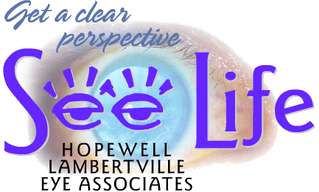
Patient Precautions When Ordering Eyeglass or Contact Lenses via the Internet
We hope you’ll want to purchase your eyeglasses and/ or contacts from our office and we believe we offer the best value available when you consider service, quality and price. If you decide to shop elsewhere for glasses, we certainly understand and we will be pleased to provide your continued eye examinations and eye health care.
INTERNET SCAMS
Beware of internet vendors for questionable authenticity of products or “to be good to be true” sales - scams, online “bait and switch” pricing schemes, personal data -mining and sale of personal information and credit card safety by online vendors, as recently exampled by cyber-security breaches at Target and Home Depot.
Most importantly, we have significant concerns with the use of eyeglass and contact vendors over the Internet. In many cases, these vendors are very poor quality product, distribute illegally diverted products, counterfeits, substituting product, or providing products manufactured below proper GMP (good manufacturing standards) (i.e. improper sterilization, contaminated solutions…) with complete disregard for a patient’s health and safety leading dangerous and serious injuries and complications.
Fitting eyeglasses and contacts lens require expertise by your eye care doctor not an unknown – non –licensed and untrained individual online. Properly fitting eyeglasses and contacts requires precise measurements, unbiased advice based on your needs and skillful adjustments of the eyeglass frame and lenses. contact lenses defined as a medical device and require proper fitting and evaluation with continued monitoring. Internet vendors do not actually meet with you in person they can’t provide those services.
A study published by AOA (American Optometric Association) in conjunction with the Optical Laboratories Association and The Vision Council reinforces the drawbacks and problems with online eyeglass orders1. In other words - Buyer beware.
- Of 200 glasses ordered online, only 154 pairs were received
- 44.8% of he glasses had incorrect prescriptions or safety issues;
- 29 % had at least one lens fail to meet required prescription;
- 23 % of adult lenses failed impact testing; and, 29 percent of children’s lenses failed impact testing.
WHAT WE OFFER THAT THE INTERNET VENDORS CANNOT
The following services or measurements are not available if you purchase glasses elsewhere:
- Eye Size
- PD
- Vertical optical center
- Bridge Size
- Lens material and index
- Frame model and color
- Temple length
- Multifocal design and brand
- Segment height
- Ongoing adjustments
- Optic – Geometric center
- Eyeglass dispensing adjustment
- Education training on lens and frame features and care
These measurements should be provided by the person selling the glasses and should be a trained licensed individual. It is illegal in the state of New Jersey for our office to supply this information other than the actual prescription to the patient.
Hopewell – Lambertville Eye (HLE) Associates provide all these eyecare and optical services at no additional cost for patients whom purchase eyeglasses or contact lenses at HLE but we can’t provide these same services for eyeglasses or contacts purchased elsewhere.
HLE is not responsible nor required to supply information to any individual other than the patient. If contacts or eyeglasses are purchased elsewhere, HLE is not responsible for the errors in eyeglass fabrication or supply of lenses. HLE reserves the right to charge the patient for services rendered, medical or refractive or to check or verify eyeglasses made elsewhere or charges associated with contact lens examines and medical care. HLE will not be responsible to supply “trial lenses” without appropriate charge to the patient. The third party online vendor has the complete responsibility for all products ordered via that vendor, as well as responsibility for any medical complications associated with the distributed product.
By Federal law and New Jersey statutes our office is required to strictly verify, NOT provide information regarding your eye health and prescriptions. We require the consent of the patient to release this information by HIPPA (privacy regulations). Eyeglass prescriptions can be provided directly to the patient or to a licensed practitioner, doctor or optician. All online vendors are required by the federal law called Fairness to Contact Lens Consumer Act (FCLCA) act to verify all contact lens prescriptions prior to filling the request, otherwise this is a reportable criminal offensive with a significant $10,000.
Any questions, please call Hopewell Eye: 609-466-0055 or Lambertville 609-397-7020 SEELIFE.NET
The following are the guidelines of the New Jersey State Board of Optometry who oversees our license to practice.
It is the responsibility of the party fabricating the glasses to make the proper measurements. As seen in the citation below; the PD is only a small part of the measurements required to fabricate the lenses. We are responsible to supply the prescription - but not he additional measures fore they are specific to the frame and how the lenses will be mounted.
Q: Is an optometrist required to include the "pupillary distance" on an eyeglass prescription?
No. An optometrist is not required to include the interpupillary distance and height segment measurements on an eyeglass prescription.
In the past all spectacle lenses were made of the same index of refraction (density), same center, edge thickness and the same style. All of the patients facial anatomical measurements were taken with a millimeter ruler at the time of the eye examination. With the explosion of new frame designs, lens materials and technologies, the old measurement system is no longer remotely adequate. Proper placement of the appropriate aspect of the lens in front of the patients pupil is critically important for today's technologically more advanced spectacle lense and frame materials. Special instrumentation and devices are required to ensure the prescription lenses will function properly for the patient. The measurements must be made relative to the eyeglass frame selected.
Therefore, the patient must be measured by the seller and/or the dispenser of the eyeglass frame.
The optometrist cannot assume any responsibility for the proper prescription being misplaced in front of the pupil due to the configuration of the frame, the lens style or material chosen by the patient. Not all lenses are created equal and there are many technological differences.
Pupillary distance, "PD", refers to the measured distance between the patient's pupils, and is taken for at least far and near viewing distances. Today's lenses require precise horizontal and vertical placement of the lens selected by the patient.
These measurements are affected by the lens and frame shape, size and use (driving, computer or reading) of the prescription. Therefore, the patient must be measured by the seller and/or dispenser of the eyeglass frame.
Segment height, bifocal, trifocal or progressive lenses, refers to the height or placement of the near viewing (intermediate or reading portion) of the lens. Most lens manufacturers have a fitting guide to ensure the lens is positioned for maximum viewing efficiency with minimum of peripheral distortion. Therefore, the patient must be measured by the seller and the dispenser of the eyeglass frame.
Read more
1 http://www.aoa.org/documents/public/A_Closer_Look_at_Ordering_Eyeglasses_Online.pdf
2 http://www.ecfr.gov/cgi-bin/text-idx?c=ecfr&tpl=/ecfrbrowse/Title16/16cfr315_main_02.tpl




